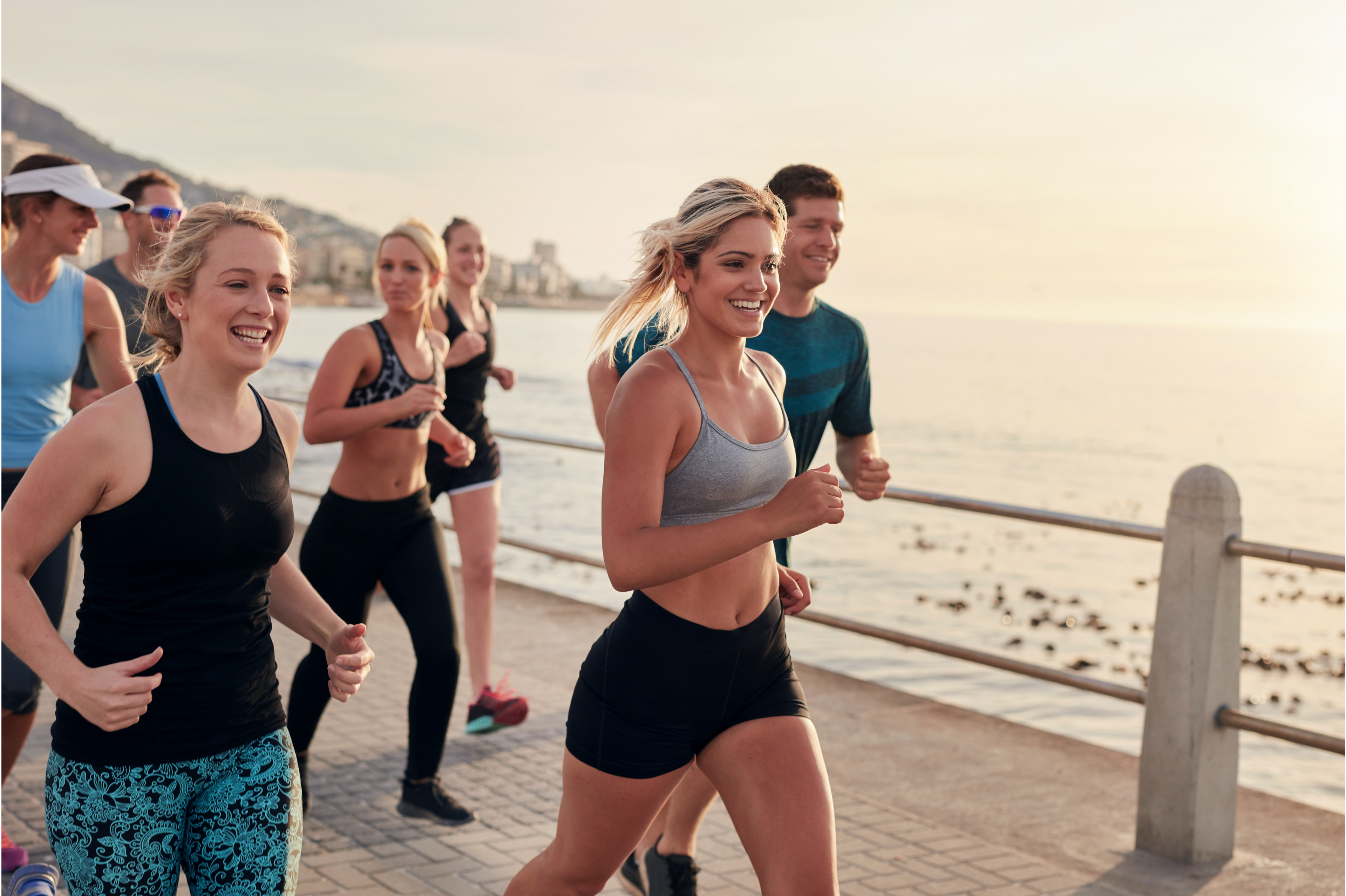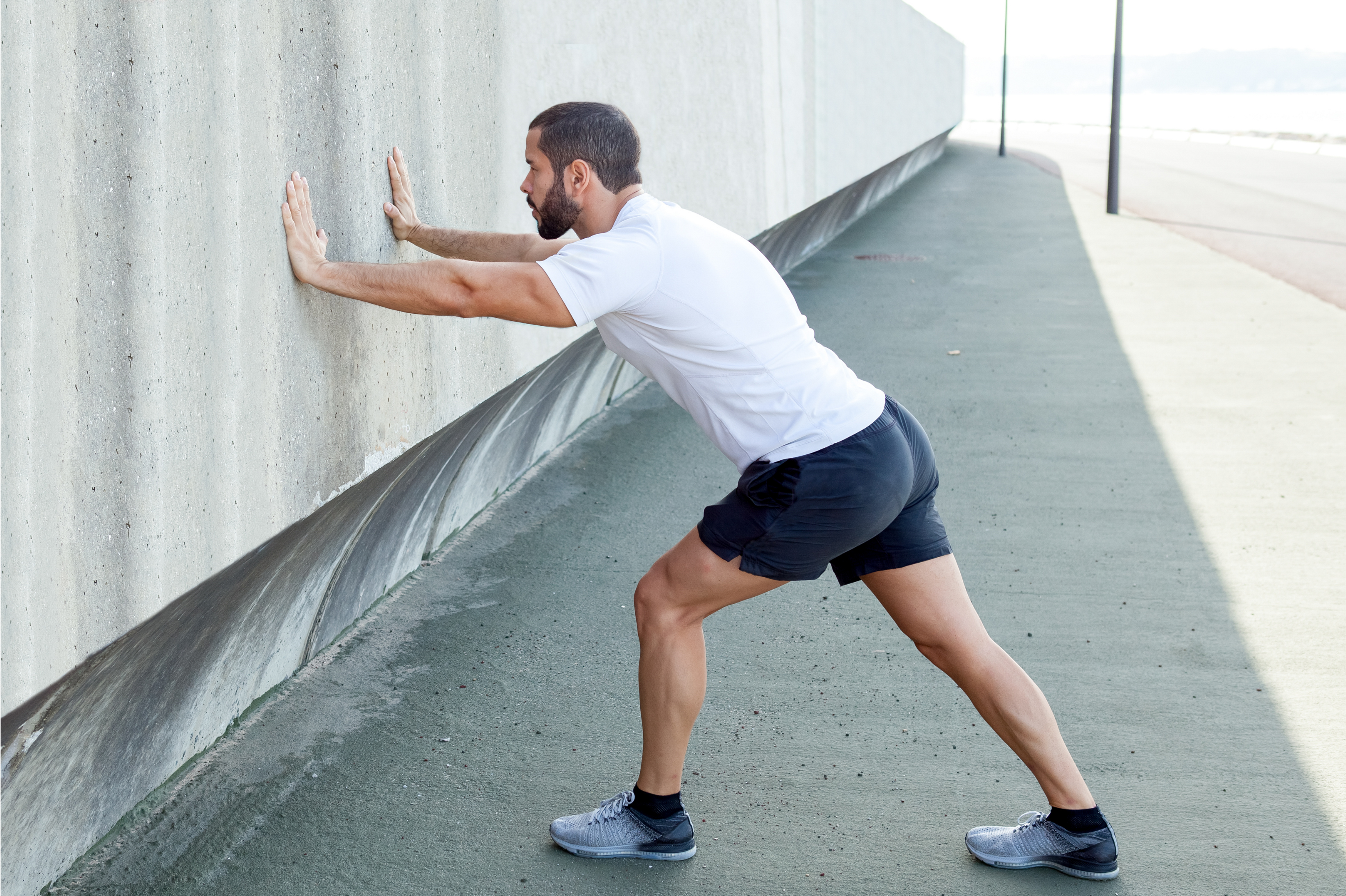Preventing overuse injuries: How to run without getting hurt
If you're in the middle of training and don't want an injury to set you back, this article will help you understand overuse injuries and how to prevent them.
What is an overuse injury?
Overuse injuries happen when you place more load on your body than it can handle, and you become injured.
Research shows us that these types of running injuries develop in two different ways:
- Suddenly: In one very hard exercise session, if the activity level is too high for your current tissue strength and endurance, or
- Gradually: Over time, if you do not allow enough recovery time between hard workouts
Why do overuse injuries happen?
Most commonly, overuse injuries develop when you disrupt your body's natural growth and repair process in response to exercise.
Your body's natural growth and repair process
When you exercise, you stress your tissues (bones, ligaments, tendons, muscles, joints), and they develop tiny micro-injuries. In response, your body goes into repair mode and removes unwanted injured cells, repairs the remaining ones, and adds new, stronger ones. In this way, your tissues heal and are made more robust.
It's crucial to understand that this micro-injury-repair cycle is a normal stress reaction and response to exercise. It helps your body adapt to higher loads, which is why you get stronger and your activities get easier.
Problems only arise when you load your tissues again before your body completes the previous repair cycle.
For example, not allowing enough rest after workouts interrupts your healing and rebuilding process. It also results in more micro-injuries, which your body’s repair process may be unable to keep up with. Over time, the injured tissues become irritated and sore and lose some strength.
This is why overuse injuries develop.
What parts of your body are more susceptible to overuse injuries?
Sports-related overuse injuries can occur in various structures and parts of your body, including your:
- Bones
- Muscles
- Tendons
- Fascia
- Bursae
- Nerves
Studies suggest that this is sport-specific, and certain sports may predispose you to particular types of overuse injuries.
What are the most common overuse injuries in runners?
As a runner, you’re probably acutely aware that running causes a repetitive impact on your lower limbs. This means if you overdo it and develop an overuse injury, it will likely be in your lower limb tendons, joints, or surrounding structures.
The most common running injuries caused by overuse are:
Overuse injuries of the knee
- Patellar tendinopathy (jumper’s knee)
- Patellofemoral pain syndrome (Runner’s knee)
- Generalized knee pain (whole knee joint soreness without specific injury)
Hip overuse injuries
- Hip flexor tendinopathy
- Generalized hip pain (whole hip joint soreness without specific injury
Lower leg overuse injuries
- Tibialis posterior tendinopathy
- Peroneal tendinopathy
Other examples of overuse injuries in runners:
- Stress fractures
What can you do to prevent overuse injuries from running?
Research shows us that some of the most effective ways to avoid overuse injuries in running are:
Let's look at each of these in a little more depth.
1 - Correcting training load errors
Your training and competition workloads can directly affect the micro-injury-repair cycle we discussed earlier and lead to overuse injury. To prevent this, you should:
Prioritize your post-run recovery
Ensure you include enough time in your training schedule to recover after exercise.
A good rule of thumb is at least 24 hours for easy and 48 hours for more challenging workouts.
But this depends on your general fitness, so you should gauge what works best for you.
Ramp up your running volume and intensity gradually
To increase your running volume and intensity, do it slowly and monitor changes carefully. This way, you learn how your body responds to exercise and can adjust your activity levels appropriately. In turn, it helps you prevent tissue overload.
An increase in your weekly volume of between 10% to 20% is usually safe.
2 - Adding strength training to your routine
Strength training has multiple benefits for overuse injury prevention. Stronger muscles can help:
- Increase your tissue capacity - improving your strength and endurance
- Support your joints better increasing your joint stability
- Absorb more forces while you run - reducing the load and impact on your joints and the supporting structures, such as the ligaments and tendons
When done with good control, strengthening exercises can also help improve your joint position sense and movement coordination. Better control over how you move and where your limbs are when you run can help prevent overuse injuries.
Check out the strength training workouts in the Exakt Health app if you want more guidance. All the exercises have clear video and text instructions, and the App uses your feedback after workouts to progress your exercises at the correct time.
3 - Optimizing your diet
In addition to adequate rest, your body needs nutrients to help complete the post-exercise repair process.
When you don't consume enough or the right combination of nutrients to replace those you used during exercise, it can contribute to overuse injuries, for example, stress fractures.
Taking in the right nutrients can fuel the post-workout repair process and provide the building blocks your body needs for healing and building stronger tissues.
If you're unsure what nutrients you need to properly support your workout routine, speaking to a dietitian or sports nutritionist can help you get on the right track.
4 - Adapting your plan
Our bodies usually warn us well in advance that something isn't right. The problem is that having the discipline to adapt your training plan when you're on a roll can be very hard.
Try not to ignore those early warnings. If you act swiftly, you might only have to take one or two recovery days instead of being sidelined by injury for several weeks.
A few warning signs that you may be heading for an overuse injury are:
The Exakt Health app makes it easy to adjust your schedule on the fly. Quickly switch your planned workouts for the day or set a more permanent weekly schedule that fits with your life.
Will stretches help prevent overuse injuries?
Some evidence points to a link between a lack of flexibility and a higher risk of acute injuries, such as muscle tears. But there's no evidence to prove that regular stretching prevents overuse injuries directly.
The conclusion is that stretching may not help prevent overuse injuries but could help prevent acute muscle tears.
With this in mind, keeping a good level of mobility may be helpful, but there's no need to be super flexible as it likely won't be any more beneficial for you.


